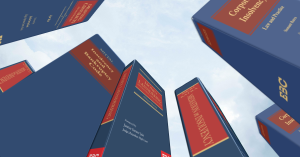
We’ve all been there, trying to focus on work, sleep, or just enjoy some peace when suddenly, the neighbour’s blaring speaker turns your home into an unwilling concert venue. From loud parties to endlessly barking dogs and roaring generators, neighbourhood noise can be more than just an annoyance, it can be a genuine legal issue. So, how far can your neighbours go before they cross the line? Let’s learn law and decode what law for noise pollution really says!
Understanding Noise as a Legal Nuisance
Noise pollution isn’t just about decibel levels, it’s about the right to live peacefully. Under Article 21 of the Indian Constitution, every citizen has the fundamental right to life, which includes the right to a peaceful and healthy environment. When that peace is shattered by excessive sound, law for noise pollution steps in to restore order.
The Legal Framework: What the Law Says
India has a robust legal structure to tackle noise pollution. Here’s a quick breakdown of the major provisions under law for noise pollution:
- The Noise Pollution (Regulation and Control) Rules, 2000 – These rules, framed under the Environment (Protection) Act, 1986, define permissible noise levels for different zones (industrial, commercial, residential, and silence zones).
- Section 133 of the Code of Criminal Procedure (CrPC) – Empowers magistrates to take action against public nuisances, including persistent noise.
- Section 268 of the Indian Penal Code (IPC) – Defines public nuisance; excessive noise that harms the community qualifies.
- Section 290 of IPC – Imposes penalties for public nuisance, which includes noise beyond acceptable limits.
- Motor Vehicles Act, 1988 – Restricts the use of pressure horns, modified silencers, and loud exhausts.
- Air (Prevention and Control of Pollution) Act, 1981 – Although primarily about air quality, it provides broader environmental safeguards that indirectly support law for noise pollution.
Zoning Out the Noise
Under the Noise Rules, different areas have distinct noise limits. For instance, residential areas can’t exceed 55 dB during the day and 45 dB at night. Silence zones—like hospital areas, schools, and courts—are even stricter, capped at 50 dB during the day and 40 dB at night.
So, that late-night karaoke session that makes your walls shake? It might be breaking more than your sleep—it’s breaking the law for noise pollution.
What You Can Do
If your neighbour’s sound system has become a permanent fixture in your nightmares, you can:
- Politely address the issue – Sometimes, a conversation works better than confrontation.
- Complain to local authorities or the police – Most states have helplines or online grievance systems for noise complaints.
- Approach the Magistrate under Section 133 CrPC – For persistent offenders, the law for noise pollution gives you the right to seek a legal remedy.
The Bigger Picture
The law for noise pollution isn’t just about decibels—it’s about dignity. It protects our collective right to peace, ensuring that urban growth doesn’t drown out serenity. In a fast-paced world full of constant buzz, respecting noise laws is a small step toward a calmer, more harmonious community.
So the next time you turn up the volume, pause for a moment—and remember, law for noise pollution is here to make sure everyone gets to enjoy a little peace and quiet.
To deepen your understanding of environmental and administrative laws, explore Administrative Law by I.P. Massey (New Edition) and Administrative Law by I.P. Massey — two authoritative works that simplify complex legal principles for readers and practitioners alike.
















